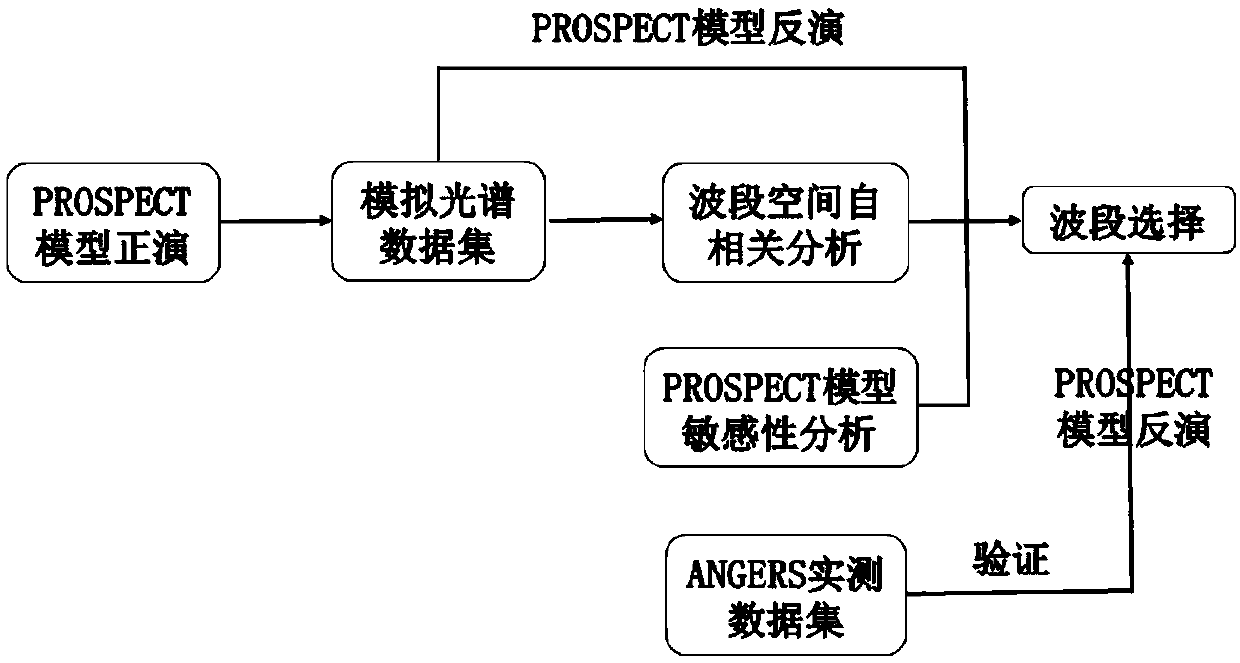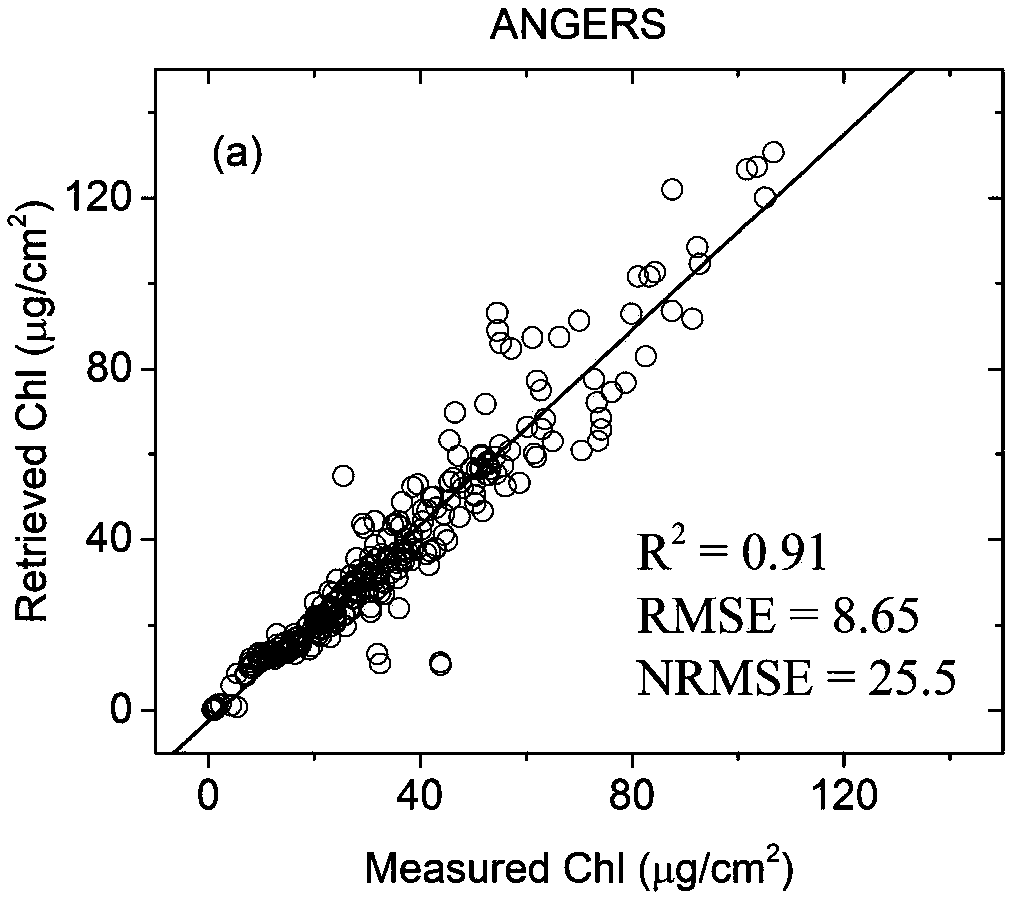Multi-spectral laser radar wavelength selection method for vegetation biochemical parameter detection
A laser radar and wavelength selection technology, which is applied in the comprehensive application field of surveying, mapping and remote sensing, and can solve the problems of increasing instrument cost, system complexity, and increasing effective information.
- Summary
- Abstract
- Description
- Claims
- Application Information
AI Technical Summary
Problems solved by technology
Method used
Image
Examples
Embodiment Construction
[0030] The technical solution of the present invention will be described in detail below in conjunction with the drawings and embodiments.
[0031] The present invention proposes that for the design and development of emerging detection instruments such as multi-spectral laser radar, in order to achieve efficient detection while avoiding too many detection wavelengths resulting in excessive instrument cost and system complexity, it is necessary to select wavelengths for specific detection applications. The best detection band.
[0032] Based on the theories such as PROSPECT vegetation radiation transfer model, model sensitivity analysis, and band spatial autocorrelation analysis, the present invention constructs a physical-based multispectral laser radar data band automatic selection algorithm for the application of vegetation biochemical parameter detection. By selecting the most sensitive and information-rich bands: removing the interference of redundant bands to guide the e...
PUM
 Login to View More
Login to View More Abstract
Description
Claims
Application Information
 Login to View More
Login to View More - R&D
- Intellectual Property
- Life Sciences
- Materials
- Tech Scout
- Unparalleled Data Quality
- Higher Quality Content
- 60% Fewer Hallucinations
Browse by: Latest US Patents, China's latest patents, Technical Efficacy Thesaurus, Application Domain, Technology Topic, Popular Technical Reports.
© 2025 PatSnap. All rights reserved.Legal|Privacy policy|Modern Slavery Act Transparency Statement|Sitemap|About US| Contact US: help@patsnap.com



